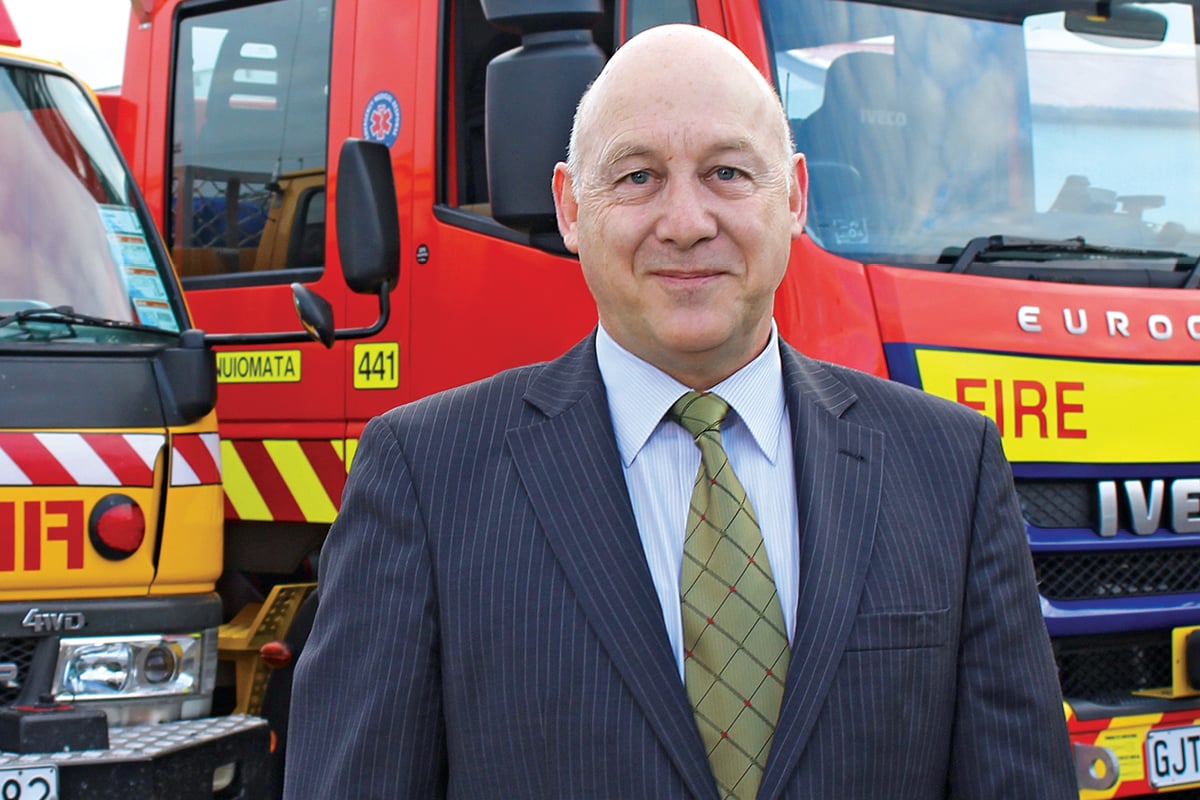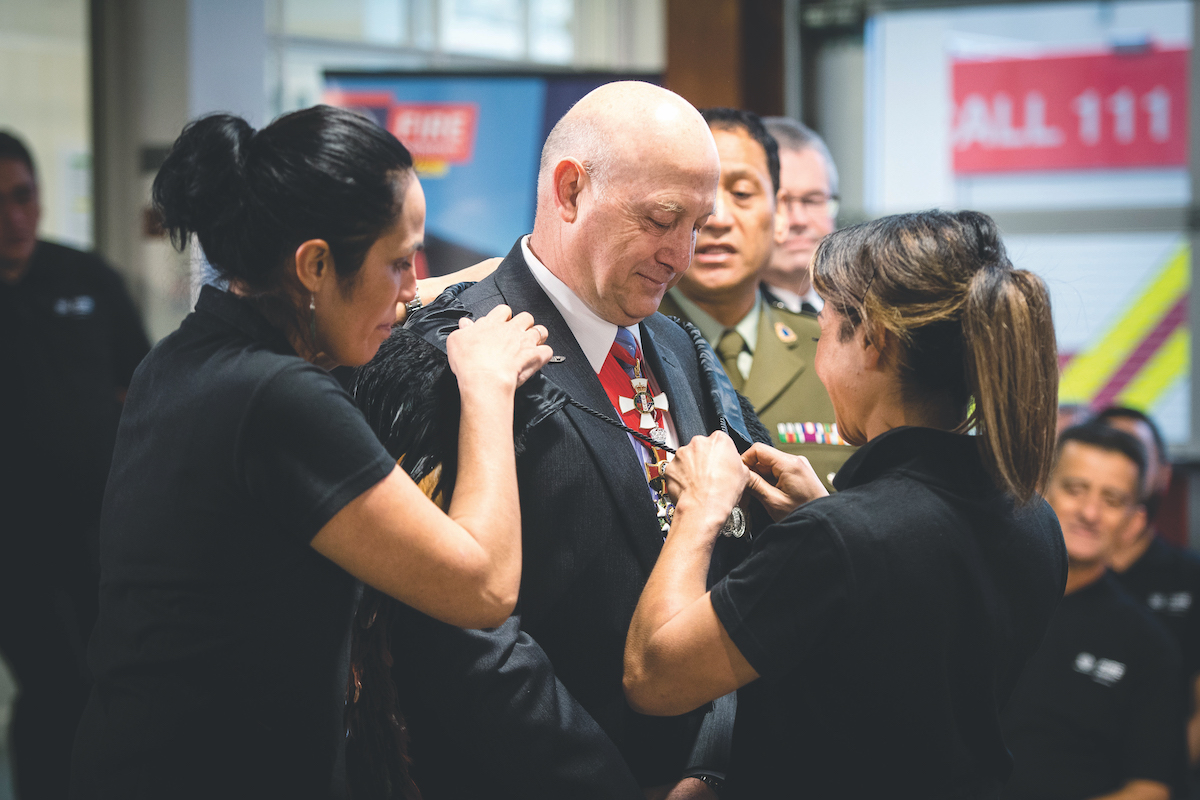Baptism by fire: Rhys Jones
Rhys Jones, Chief Executive of Fire and Emergency New Zealand – and ex Chief of Defence Force – has spent his career in the firing line.
At the age of 50, Rhys Jones became New Zealand’s youngest ever Chief of Defence Force (CDF), taking up the position just before the 2011 earthquake that devastated Christchurch.

By 2014, having yet to celebrate his 54th birthday, he also became the country’s youngest ever ex-CDF. The top job wasn’t one he’d necessarily coveted during his 35-year career in the army, but one he applied for out of sheer concern. "I was afraid of what would happen if I didn’t step up to that role," he tells The CEO Magazine.
Not that it was the easiest moment for someone to put their hand up to lead the New Zealand Defence Force, even for the then-Chief of Army. "The government was putting a freeze on its budget. A lot of people thought I’d been thrown a hospital pass, which I probably had been," he acknowledges wryly.
Although conscious that "as you progress in Defence, you kind of know that eventually you’ll have to leave," he still admits to feeling "too young to retire" when he finished up in the CDF role.
To the outside world, his next move – a collaboration with film director Sir Peter Jackson – may have appeared unexpected. Yet his appointment as Executive Director of the National Military Heritage Charitable Trust, where he oversaw the construction of Jackson’s Great War Exhibition, was a natural continuation of the military heritage work he had started during his tenure as CDF.
He calls the following period his "years of hiatus", dipping into a variety of roles, such as the well-trodden path into the consulting world as well as serving on the binational team developing the French Memorial at Pukeahu National War Memorial Park in Wellington.
"I wasn’t really sure what I was going to do next and a friend of mine’s daughter said, ‘You’re just waiting for something worthy.’ That really struck home," he says.
In 2017, that opportunity presented itself with the creation of Fire and Emergency New Zealand. "In the wake of the Christchurch earthquake, the government realised that all our civil defence and emergency response was really pushed down to a local level and there wasn’t a good mechanism for handling big disasters," he explains.
So, it was decided to merge urban and rural fire agencies into a single strong unit, equipped to handle a wider array of emergencies and "be a much stronger player".

Years of design and consultation resulted in the creation of Fire and Emergency New Zealand, and Rhys was made CEO of the merging process. At its inception, it became the sixth largest fire agency in Australasia, with a force of 14,000.
His military background raised some eyebrows before he even took up the role. "There was a lot of comment about that," he admits. "I suppose if there’s a mantra for many firefighters, it’s that they need to be led by a firefighter."
"I suppose if there’s a mantra for many firefighters, it’s that they need to be led by a firefighter."
Yet the scope of Fire and Emergency New Zealand is to handle the big disasters he counters; not just fires, but events such as earthquakes and other natural catastrophes.
"So it’s more about disaster management or incident response, which is where my experience comes in," he explains. Rather than being an operational decision-maker – "I have senior firefighters who do that" – Rhys describes his position as one that involves making sure the organisation can do things.
"So it’s structure, it’s equipment, it’s training, it’s people, and it’s engagement with local communities," he explains.
Amalgamating the urban New Zealand Fire Service with dozens of rural fire agencies – mainly controlled by local government – was never going to be without friction and Rhys has had to consider three distinct cultures in the overall design and operation of the new agency: career urban, volunteer urban and volunteer rural.
"The urban firefighters deal with a fixed incident. The weather isn’t going to change much and they can turn up and know exactly what’s going to happen," he says.
"Whereas a wildfire could be going for weeks, so it’s a different approach. You can’t put a large vegetation fire out; you’ve got to let it burn itself out."
Yet, the effects of climate change are being felt and the increase in wildfires (along with seasonal storms and other rough weather) means that he has faced no argument to his long-term goal.
"We’ve actually got to be proficient at all types of response, and be able to switch between them because we’re going to have them all at the same time."
But while a 2030 target date for this interchangeable skill set is now marked in everyone’s diary, how it’s reached is far more complicated.
"The difficulty of the merger is not necessarily the fact that urban and rural have different approaches to large fires," he says. "It’s what roles have primacy and who has more skills in what particular area."
Rhys’s daily mantra – one that has guided him through his life in the army and now, beyond it – is that life is about people. "Change is not about structure or equipment; it’s about people changing what they do."
"We’re creating an organisation that, rather than having standardised brigades around the country, accepts that certain parts of it are going to require different capabilities."
During the first six months at Fire and Emergency New Zealand, Rhys spent two to three days every week travelling the country, something he has now cut back to every fortnight. "By getting out and about I could get the message out about the intent and particularly the ‘why’ behind things", he says.
"To reinforce why they join, particularly the volunteers who join to protect communities. We are trying to protect the community even more by adapting to local needs.
"We’re creating an organisation that, rather than having standardised brigades around the country, accepts that certain parts of it are going to require different capabilities," he continues.
"Some areas may need to focus on structure fires, building fires. Others may be focusing on road-crash rescue because they are on a major state highway or might be the medical response because the nearest ambulance is two hours away."
A Full House
Rhys has been awarded the Royal Military Order of Saint George by the King of Tonga, Companion of the New Zealand Order of Merit, and the Commander of the Legion of Honour by the French Government. "I call them my full house: a King, Queen and President have given me these awards," he says. "But the Legion of Honour is my special love. I’m a great military history fan and Napoleon Bonaparte, who established it, is one of my favourite icons."
He emphasises that his main job is to be this face of change. "I see myself as the person who unlocks the problem areas by going out and facing the difficult questions or the hard issues," he says.
There’s been no harder issue than the internal fire he has battled for most of his tenure: bullying. In January 2019, after an independent review commissioned by Fire and Emergency New Zealand, retired Judge Coral Shaw detailed a culture of widespread bullying and harassment within the organisation.
"We are in a tough physical and mental environment, so we need to create a similar training environment so people are robust enough to handle that. But often our people went too far," he admits.
The creation of Fire and Emergency New Zealand was a "chance for us to draw a line in the sand", Rhys continues. "It gave us a unique opportunity to say, ‘All those things in the past, we don’t want them anymore.’"
The objective of the review, he adds, wasn’t to identify the issues, as "we knew what they were", but to demonstrate that, even before Fire and Emergency New Zealand was formed, steps were being taken to change the culture.
"The day the report was released, I wanted all the unions and associations that represent our members lined up behind me saying, ‘No more.’ To demonstrate that, going forward, there would be no place for these people to hide," he says.
While he is happy with the progress so far, he admits there’s still a long way to go. Already more than halfway through his initial three-year appointment, does he find himself wondering what the future holds?
"I know that if I stay another three years, the changes I think are important will not all have occurred in that time. At some stage, I’ll have to step away from the organisation, knowing that my legacy will still be another decade away before it’s fully realised," Rhys responds philosophically.
Proudly supported by: